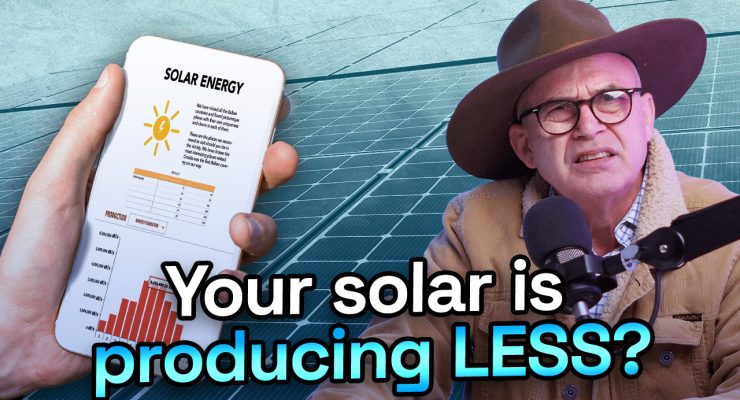
Fast read
Solar systems and panels are designed to generate a certain amount of electricity, called rated power, in perfect lab conditions. Solar panels may not produce their maximum power output because of factors such as temperature and light levels.
Solar systems and panels typically produce less energy than their rated capacity because of lighting circumstances outside ideal laboratory conditions.
A solar system's output may also be impacted by elements like the inverter's efficiency and the position of the panels. Being realistic about expected solar system output is important as it may not always match its rated power.
Why is my solar system producing less power than expected?
Years ago, I was in charge of a solar installation company. Sometimes after an installation, we would get a call from a customer, and they would say something like, “Hang on, I just had a 5kw solar system installed. The second day my system is on, I look at the monitoring app and it only produces 3.9 kWh.
Why am I only getting 3.9 kWh of output when I have a 5 kW system? Should I not get 5kWh in output when it’s perfectly sunny?
Then, I always felt the system handover procedure or the salesperson left an important piece of information off in explaining to the customer how solar works.
Australian systems
The reality in Australia, in many areas, you might only have 500, 600 or 800 Watts on a given day as the light intensity hits that panel. So if only 80% of the thousand watts of light shines on the panel, the solar panel will only produce an output of roughly 80%. In our 400Watt panel example, this would be 320Watts.
So please do not think that because you have a 5kw solar panel system, every hour of the day will produce 5 kW hours of output. The actual solar system power output will greatly depend on the light intensity.

European Solar
In Europe, for example, in Germany, some regions only experience a 400W per square meter light intensity (irradiation), a 10 kW solar system output would only be half of what a system in North Queensland will produce per year.
Also, a 10 kW system in Cairns, which is an area of high solar irradiation, will, on average, produce 17,382 kWh of electricity output per year, while in Hobart, with much lower light intensity, the same 10 kW system will produce only 12,359 kWh, a 28.9% lower production. So where you live will affect the return on investment and solar system output numbers.
Solar system output
Therefore, if a 400-watt panel produces 320 to 350 Watts in good conditions within Australia, you are getting a good result. Usually, a 5kW solar panel system does not consistently produce 5kW output. However, there are specific days with certain clouds that temporarily increase the light level numbers because of cloud reflection.
For warmer times of the year in the middle of the day, you should probably expect a peak of around 4.2-4.3 kW of output from a 5 kW solar panel system for a few hours in the middle of the day.
Please rest assured that if the system does not reach its maximum capacity, you do not need to be concerned.


